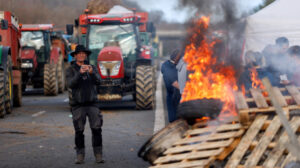Maintenance and structural reinforcement works at the Minoan Palace in Malia is launched by the Ministry of Culture, as informed in a statement.
Malia is on the list of archaeological sites of high risk due to the climate crisis, as heavy rainfall has caused, in the last five years, flooding phenomena in the archaeological site.
The Ministry of Culture has included in its planning the implementation of a flood protection project with a budget of 3,360,000 euros, with resources from the Recovery Fund.
Culture Minister Lina Mendoni said:
“For the , the prevention, systematic monitoring and shielding of our country’s cultural heritage from the climate crisis is a political priority, as is the protection, restoration and enhancement of archaeological sites, and the upgrading of visitor service infrastructure.
The archaeological site open to visitors includes the Minoan Palace and the excavated parts of the ancient city surrounding it.
Extreme weather events began to be observed in 2019 when the intense floods that hit the island led to landslides and damage to the archaeological site.
The implementation of fixing and maintenance works was deemed necessary for the protection of the monuments, while a flood protection project is underway with the construction of an extensive drainage network and the replacement of damaged roofs with new, highly durable ones.
The construction of the palace of Malia dates back to the beginning of the Early Palaeontological period.
The discovery of archaeological material dating between 1900-1700 BC supports the hypothesis that the Malian palace predates those of Knossos and Phaistos.
The Minoan Palace of Malia is included in the Minoan palace centres that we have proposed for the serial inscription of Minoan palaces on the UNESCO World Heritage List.”
The completed conservation and building materials conservation and fixing study concerns the architectural remains of the archaeological site of Malia, a site of extensive political, economic and cultural activity and with extensive commercial exchanges.
The study records the construction materials of the monument, describes the state of conservation of its individual elements and includes conservation proposals.
In the Malia archaeological site, the palace is not covered but exposed to the weather, unlike the Eastern Warehouses, the Crypt and the M district, where there are coatings and structures made of soil material and covered with roofs.
Language developed 8 times earlier than previously thought, says new book (video)
With regard to pathology, problems of erosion and stone breakage, collapse and deformation, biological colonisation, among others, are identified.
During the heavy rains of November 2020, the wider Malia area and the archaeological site – the central courtyard of the palace, some internal enclosed areas and areas located at low levels (Crypt, Quarter M) – were flooded.
Due to the volatile nature of the materials and the poor state of preservation, localised collapses of stones and masonry as well as parts of the walls made of soil material were caused.
The planned interventions include, among others, cleaning of stones and treatment of biological agents, welding, filling-sealing, fixing of walls, maintenance of floors.
Ask me anything
Explore related questions





